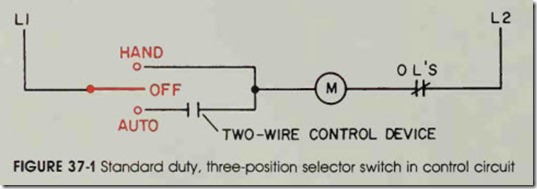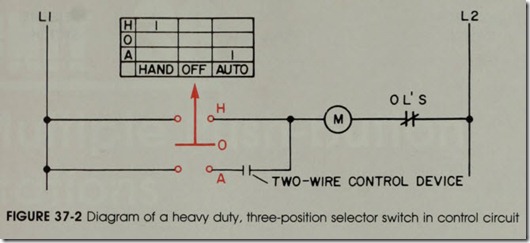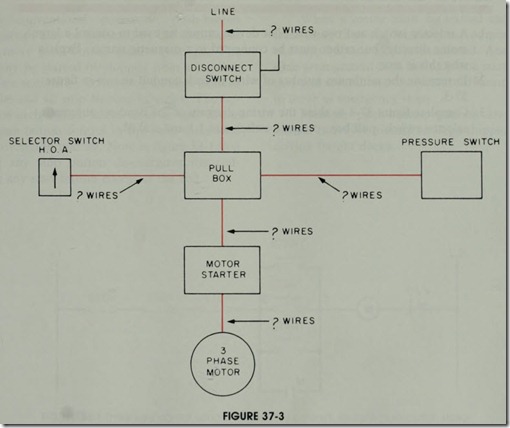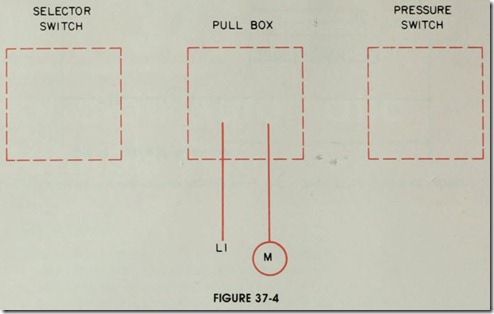Objectives
After studying this unit, the student will be able to:
• State the purpose of hand-off-automatic controls
• Connect hand-off-automatic controls
• Read and draw diagrams using hand-off-automatic controls
Hand-off -automatic switches are used to se lect the function of a motor controller either man ually or automatically. This selector switch may be a separate unit or built into the starter enclosure cover. A typical control circuit using a single break selector switch is shown in figure 37-1.
With the switch turned to the HAND (manual) position, coil (M) is energized all the time and the motor runs continuously. In the OFF posi tion, the motor does not run at all. In the AU TOMATIC position, the motor runs whenever the two-wire control device is closed . An operator does not need to be present. The control device may be a pressure switch, limit switch, thermo stat, or other two-wire control pilot device.
The heavy-duty, three-position double-break selector switch shown in figure 37-2 is also used for manual and automatic control. When the switch is turned to “hand,” the coil is energized, by-passing the automatic control device in the “auto” position.
REVIEW QUESTIONS
1. A selector switch and two-wire pilot device cannot be used to control a large motor directly, but rather must be connected to a magnetic starter. Explain why this is true.
2. Determine the minimum number of wires in each conduit shown in figure 37-3.
3. Complete figure 37-4 to show the wiring diagram of the hand-off-automatic selector switch, pull box, pressure switch and Ll and coil M.



